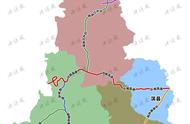不知道大家平常用 Reduce 多不多,反正本瓜用的不多。但实际上,Reduce 能做的,比我们能想到的要多得多,本篇带来 10 个Reduce 常用场景和技巧,一定有你不知道~
冲ヾ(◍°∇°◍)ノ゙
累加/累积累加我们可能是最熟悉 Reduce 的一种用法,除此之外,还可以用做累积。
// adder
const sum = (...nums) => {
return nums.reduce((sum, num) => sum num);
};
console.log(sum(1, 2, 3, 4, 10)); // 20
// accumulator
const accumulator = (...nums) => {
return nums.reduce((acc, num) => acc * num);
};
console.log(accumulator(1, 2, 3)); // 6求最大/最小值
如果你用原生 api 求最大/最小值,无可厚非,Reduce 也能实现同样的效果。
const array = [-1, 10, 6, 5];
const max = Math.max(...array); // 10
const min = Math.min(...array); // -1
复制代码
const array = [-1, 10, 6, 5];
const max = array.reduce((max, num) => (max > num ? max : num));
const min = array.reduce((min, num) => (min < num ? min : num));格式化搜索参数
获取 url 上的参数是我们经常面临的需求,用 forEach 遍历可以,用 Reduce 累加更可以,这样可以减少声明 query 对象。
// url https://qianlongo.github.io/vue-demos/dist/index.html?name=fatfish&age=100#/home
// format the search parameters
{
"name": "fatfish",
"age": "100"
}
const parseQuery = () => {
const search = window.location.search;
let query = {};
search
.slice(1)
.split("&")
.forEach((it) => {
const [key, value] = it.split("=");
query[key] = decodeURIComponent(value);
});
return query;
};
const parseQuery = () => {
const search = window.location.search;
return search
.slice(1)
.split("&")
.reduce((query, it) => {
const [key, value] = it.split("=");
query[key] = decodeURIComponent(value);
return query;
}, {});
};反序列化搜索参数
有了获取 url 参数,就有把参数重新挂在到 url 上面,好用,收藏。
const searchObj = {
name: "fatfish",
age: 100,
// ...
};
const link = `https://medium.com/?name=${searchObj.name}&age=${searchObj.age}`;
// https://medium.com/?name=fatfish&age=100
const stringifySearch = (search = {}) => {
return Object.entries(search)
.reduce(
(t, v) => `${t}${v[0]}=${encodeURIComponent(v[1])}&`,
Object.keys(search).length ? "?" : ""
)
.replace(/&$/, "");
};
const search = stringifySearch({
name: "fatfish",
age: 100,
});
const link = `https://medium.com/${search}`;
console.log(link); // https://medium.com/?name=fatfish&age=100拉平嵌套数组
我们都会用 .flat(Infinity) 无限拉平所有多维数组成一维数组,只用 reduce 和 flat 也是可以做到这一点的。
const array = [1, [2, [3, [4, [5]]]]];
// expected output [ 1, 2, 3, 4, 5 ]
const flatArray = array.flat(Infinity); // [1, 2, 3, 4, 5]
const flat = (array) => {
return array.reduce(
(acc, it) => acc.concat(Array.isArray(it) ? flat(it) : it),
[]
);
};
const array = [1, [2, [3, [4, [5]]]]];
const flatArray = flat(array); // [1, 2, 3, 4, 5]实现 flat
如果想实现 flat,用 reduce 没错了,又是一个手写原生 api 内部实现,妥妥的刚。
// Expand one layer by default
Array.prototype.flat2 = function (n = 1) {
const len = this.length
let count = 0
let current = this
if (!len || n === 0) {
return current
}
// Confirm whether there are array items in current
const hasArray = () => current.some((it) => Array.isArray(it))
// Expand one layer after each cycle
while (count < n && hasArray()) {
current = current.reduce((result, it) => {
result = result.concat(it)
return result
}, [])
}
return current
}
const array = [ 1, [ 2, [ 3, [ 4, [ 5 ] ] ] ] ]
// Expand one layer
console.log(array.flat()) // [ 1, 2, [ 3, [ 4, [ 5 ] ] ] ]
console.log(array.flat2()) // [ 1, 2, [ 3, [ 4, [ 5 ] ] ] ]
// Expand all
console.log(array.flat(Infinity))
console.log(array.flat2(Infinity))数组去重
数组去重,用 reduce 竟然也可以,写法如下:
const array = [ 1, 2, 1, 2, -1, 10, 11 ]
const uniqueArray1 = [ ...new Set(array) ]
const uniqueArray2 = array.reduce((acc, it) =>
acc.includes(it)
? acc
: [ ...acc, it ], [])数组计数
将数组的项进行计数,返回一个 map,分别是每个项重复的次数,reduce 一行代码搞定,收藏!
const count = (array) => {
return array.reduce((acc, it) => (acc.set(it, (acc.get(it) || 0) 1), acc), new Map())
}
const array = [ 1, 2, 1, 2, -1, 0, '0', 10, '10' ]
console.log(count(array)) // Map(7) {1 => 2, 2 => 2, -1 => 1, 0 => 1, '0' => 1, …}获取对象多个属性
获取对象的多个属性,然后赋给新的对象,比较笨的做法如下:
// There is an object with many properties
const obj = {
a: 1,
b: 2,
c: 3,
d: 4,
e: 5
// ...
}
// We just want to get some properties above it to create a new object
const newObj = {
a: obj.a,
b: obj.b,
c: obj.c,
d: obj.d
// ...
}
// Do you think this is too inefficient?
用 Reduce 这样解决,就显得明智了许多:
const getObjectKeys = (obj = {}, keys = []) => {
return Object.keys(obj).reduce((acc, key) => (keys.includes(key) && (acc[key] = obj[key]), acc), {});
}
const obj = {
a: 1,
b: 2,
c: 3,
d: 4,
e: 5
// ...
}
const newObj = getObjectKeys(obj, [ 'a', 'b', 'c', 'd' ])
console.log(newObj)反转字符串
除了 reverse 做数组的翻转,Reduce 也可以,再加上 split,就可以反转字符串啦。
const reverseString = (string) => {
return string.split("").reduceRight((acc, s) => acc s)
}
const string = 'fatfish'
console.log(reverseString(string)) // hsiftaf
本篇通译自:medium.com/javascript-…
作者:fatfish
OK,以上便是本篇分享。点赞关注评论,为好文助力
我是掘金安东尼 100 万阅读量人气前端技术博主 INFP 写作人格坚持 1000 日更文 ✍ 关注我,陪你一起度过漫长编程岁月













